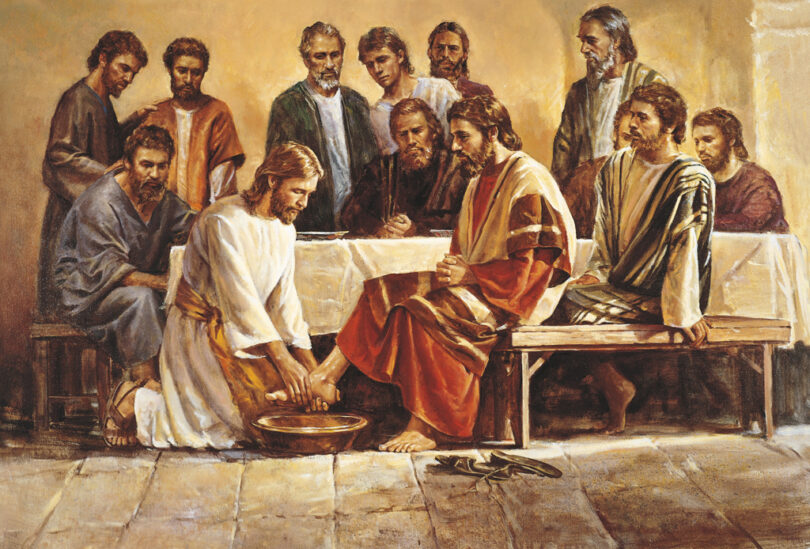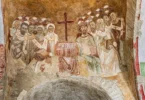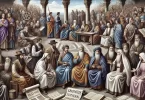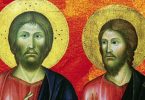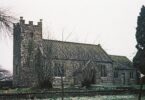Discoveries are rewriting the story of early Christianity — ancient scrolls, forgotten texts, and hidden figures challenge everything we thought we knew about the faith’s origins.
by Tanner the Humanist.
For centuries, we’ve been fed the same story, with a few official books and a whole lot of “don’t question it” rules. Yet, new archaeological discoveries are rocking the boat and shaking up everything we thought we knew about early Christianity. Ancient scrolls, inscriptions, and texts are giving us fresh insights into practices, ideas, and even people who were left out of the official Bible.
So Much More Than the Bible
The Bible has long been the cornerstone for defining Christianity. However, many writings never made it into the official canon. Recently, archaeologists have unearthed ancient scrolls that reveal early Christianity was far from uniform. These scrolls, from treasures like the Dead Sea Scrolls and other forgotten sites, contain fascinating insights into the diversity of early Christian beliefs.
Take the Gospel of Thomas, for example. It’s a text that wasn’t included in the Bible, but it’s one of the earliest writings about Jesus and his teachings. Rather than focusing on Jesus dying for anyone’s sins, the Gospel of Thomas emphasizes secret knowledge and spiritual enlightenment. It’s as if the early Christians had a “choose your own adventure” book for how they understood Jesus, and this gospel was just one of many paths.
What does this mean, you ask? Well, it blows the idea that there was one, clear-cut understanding of Jesus and Christianity right from the start. Early Christians had different views, some of which are now resurfacing. We’re learning that the story of Christianity was much more diverse than the one we’ve been spoon-fed for centuries.
Tracing Early Christian Footsteps
We’re not just talking about dusty scrolls here; inscriptions on ancient stones and buildings are revealing fascinating details about the early Christian life. Recently, archaeologists have found inscriptions that mention Jesus, early Christian leaders, and even people who were later left out of Christian history. Some of these inscriptions are on tombs, while others are carved into buildings or monuments.
One of the most intriguing finds is a fragmentary inscription from a 2nd-century Christian building in Ostia, Italy, which appears to describe a Christian community actively involved in spreading the faith. What’s outlandish about this is that it challenges the popular notion that Christianity only took off after Constantine made it the Roman Empire’s official religion. In reality, Christianity had been quietly spreading for a long time before that, even in the margins. Inscriptions like these show us that the faith wasn’t some top-down empire project. It was grassroots, with real people making it happen against the odds.
Then there are the inscriptions that mention specific figures from early Christian history — figures once thought to be nothing more than legends or afterthoughts. Take the figure of James the Just, the brother of Jesus. For centuries, scholars thought James was either an invention or just some minor character. But inscriptions recently discovered have confirmed that James was a prominent figure in the early Christian community, possibly even more significant than Peter at one point.
The Gospel of Mary Magdalene
For a long time, Christianity has been seen as a male-dominated religion, with women relegated to the background. However, recent discoveries, especially the Gospel of Mary, are changing that. The discovery of this text doesn’t just shake up our view of women in Christianity — it shows that early Christians had much more progressive views on gender equality than the official church would later promote.
This gospel, part of a set of early Christian texts known as the Gnostic Gospels, portrays Mary Magdalene not just as a follower of Jesus but as a leader, possessing in-depth, almost mystical knowledge. In this gospel, Mary is presented as a key figure who offers teachings that were excluded from the canonical gospels.
This, surely, doesn’t mean Christianity was some feminist utopia, but it does challenge the way we’ve always seen women in the early church for centuries. In the Gospel of Mary, the apostles look to Mary for guidance after Jesus’ death. She’s seen as someone with the authority to interpret Jesus’ teachings. But by the time the official church emerged, this perspective was buried, and women were sidelined.
Alternative Christian Beliefs
One of the most curious developments in early Christianity, as revealed by new texts, is the rise of Gnosticism. Gnosticism was a belief system focused on hidden knowledge, spiritual awakening, and the idea that the material world was something to escape from, which is quite different from the teachings of mainstream Christianity today.
Early Christian Gnostics didn’t necessarily reject Jesus; however, they had a completely different take on his role. For them, Jesus was more of a teacher who revealed divine knowledge to the few who were ready to receive it. This belief system was popular for a while, but as the church grew stronger, the orthodox leaders began to stamp it out.
The discovery of Gnostic texts, like the Gospel of Thomas and the Apocryphon of John, gives us a glimpse into the early Christian world where Gnosticism was a serious contender for dominance. It shows us that there wasn’t one single version of Christianity; there were multiple competing ideas about who Jesus was and what he really taught.
The Importance of Non-Canonical Texts
We’ve all heard of the New Testament, but what about all the other Christian texts that didn’t make the cut? Some of these non-canonical texts give us a clearer picture of what non-standardized Christianity looked like.
For example, there’s the Acts of Paul and Thecla, an early Christian text that tells the story of Thecla, a woman who defied societal norms to follow Paul’s teachings. In this writing, she’s portrayed as someone with an unparalleled understanding of the faith and a fierce commitment to spreading it. This characterization directly challenges the idea that women were always subservient to male leaders in the early church and points to a more radical, inclusive Christianity that might have been overshadowed by the more patriarchal structure that later took over.
Another important discovery is the Pistis Sophia, a Gnostic text that provides an alternative interpretation of Jesus’ teachings. It emphasizes wisdom and spiritual ascent rather than the death and resurrection storyline that became the cornerstone of mainstream Christianity, highlighting a far more diverse and complex Christianity than the version we know today.
What Other Significant Texts Might Be Out There?
One wonders what’s still out there. Given how much we’ve discovered in recent years, chances are there are still ancient texts sitting in forgotten caves or dusty archives, waiting to be uncovered. Some scholars speculate that there must be additional Gnostic texts that were intentionally hidden away to prevent their influence from spreading. Some of these might contain teachings about Jesus that challenge the orthodox Christian doctrine. Others could reveal entirely new figures, leaders, or beliefs that were marginalized or erased from history.
Another possibility is that we could find more texts written by women or early Christian groups who were excluded from the official canon. Think about all the early Christian communities that were eventually deemed “heretical” — what if their writings still exist, offering a glimpse into their version of Christianity? These texts could provide us with a much fuller picture of the early church, revealing how Christianity was shaped by those left on the periphery.
Conflict and Disagreements in Early Christianity
As more texts and inscriptions emerge, it’s becoming clear that early Christians argued over beliefs and practices just as much as they did over politics. The Gnostic texts, for example, show us that there was a fierce battle between the groups who believed in secret knowledge and those who upheld the teachings of the apostles. These theological conflicts were not small matters — they shaped how Christianity evolved.
When the church became more institutionalized, especially after Constantine’s reign, the orthodox leaders began to define what was “correct” belief and what was heretical. Those who didn’t conform were exiled, their writings destroyed, and their teachings erased from memory. This period of intense ideological warfare resulted in the exclusion of significant figures and ideas that didn’t fit the official narrative, leaving us with only the version of Christianity that survived.
The Impact of Excluding Figures
The exclusion of figures like Mary Magdalene from the canon undoubtedly had an enormous impact on the development of Christian doctrine and the role of women in the church. By marginalizing Mary Magdalene, the church erased an important voice that could have shaped Christianity in radically different ways. The Gospel of Mary shows that she wasn’t just a follower but a key interpreter of Jesus’ teachings. Had her story been more widely acknowledged, the role of women in the church might have developed very differently.
The fact that the Catholic Church maintained the view that Mary Magdalene was a prostitute for more than a thousand years, from the 6th to the 20th century, highlights the church’s discomfort with her powerful role and its reluctance to accept women in positions of authority. It also reflects the church’s broader approach to gender, as it sought to maintain a patriarchal structure that defined women’s roles as secondary.
Before You Go
The discoveries of ancient texts and inscriptions continue to reshape our understanding of early Christianity, revealing that the religion was anything but uniform in its early days. These findings challenge the idea of a singular, unchanging Christian doctrine, uncovering alternative beliefs, important figures, and perspectives that were excluded from the official canon.

